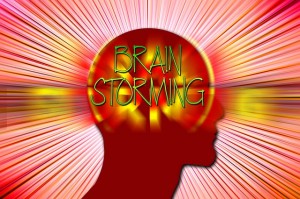 This may seem blindingly obvious, but the usual starting point for an entrepreneurial venture is an idea.
This may seem blindingly obvious, but the usual starting point for an entrepreneurial venture is an idea.
Let’s qualify that immediately. Some entrepreneurs (and do not dismiss them as they could be far better business people than you and I will ever be) may start at a different place in the process. For example, they may have access to a little capital, be unhappy with their current job, and decide that they don’t want to reinvent the wheel. A franchise might be the perfect answer to them. Or perhaps they, and their partner, have always dreamed of running a pub, or a wholefood business, or whatever. Then there are those who feel that their current skill-set should dictate what they do – becoming a life-coach, personal trainer, financial advisor and so on.
More popularly, entrepreneurs are supposed to have a big idea and to develop it. So, how do you have a big idea?
This isn’t quite as bizarre a question as you may think. Firstly, most people who have a big idea will have one that is associated with other things that they already do. (The founders of Hailo included taxi-drivers and taxi-users.) They also tend to be sponges of new ideas generally – always curious about the world around them. They will be likely to discuss things about their work and interests with other people – they may not be extroverts but they will relish the depth of debate that looks critically at the world, and considers opportunities for difference. They tend to work from first principles rather than learning by rote – this is reflected in their openness to more than one way of achieving a result, and to rethink something to try a different approach. They often seem to use a ‘what if’ approach rather than blindly accepting established ways of doing things.
Some of these are aspects of personality that have developed over time, but most can be cultivated even if they aren’t your natural style.
In 1986, Roger von Oech described four personas that the entrepreneur needs to progress through in order to achieve a successful start-up – the explorer, the artist, the judge, and the warrior. This is a useful model as it helps us see that you need to be flexible and focused in different ways through the process. There are probably better terms that reflect the interaction with others at each step, though.
The process from idea to maturity is one of ongoing problem solving. Problem solving involves two phases – a divergent (idea generation) one and a convergent (solution development) one. There are many tools routinely available in problem solving that can be used in the idea identification and development process. Obvious examples are brainstorming, mind-mapping, process mapping with flow charts, run charts, SWOT analysis, GAP analysis, Pareto (cumulative frequency) charts, experimental design, video and audio recording, surveys and questionnaires, moderation techniques, and focus groups. Any decent book on problem solving will give plenty of ideas for these [OK I’ll plug my own even if it is out of print, 1].
I have already made the point that…
YOU CANNOT BE AN ENTREPRENEUR ALONE
Absolutely fundamental to the idea identification and development process is engagement with others. You’ve only got to watch “The Social Network” to realise that this can be fraught with difficulties, but without it ideas will never get beyond the imagination of one person.
In the traditional entrepreneurial model, based on business plans and a highly analytical approach, there still needed to be considerable engagement with other people. The difference with an accelerated start-up is that it often begins with more informal engagement with necessary collaborators. The entrepreneur may bring together a group of friends to help them explain their idea and get input. They may then quickly go and have a parallel conversation with a group of prospective users. Armed with a better understanding of the idea, and what it is intended to achieve for the users, they then engage with the kind of people who they believe it will be developed by (programmers and marketeers being obvious examples). All this can take place in a comparatively short time. With web-based applications, which may have relatively low initial development costs, it is not unheard of for programmers to begin work almost as soon as they have fed in their ideas – the speed with which the entrepreneur feeds back their user discussions can be important to prevent well intentioned but off the mark activity.
[1] Wilson, G (2000) Problem Solving and Decision Making (2nd ed) Kogan Page, London.
Best wishes, Graham
Dr Graham Wilson is a behavioural scientist who has worked internationally as a consultant in organisation development, helping to create exceptional places to work. He is the author of nine management textbooks, including two that focus on the process of product development in both entrepreneurial and intrapreneurial environments. Active in the Oxfordshire business networking community, he is a Fellow of the Royal Society of Arts (FRSA) and a part-time lecturer in leadership and business at The Oxfordshire Business and Enterprise School.



